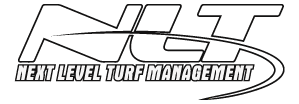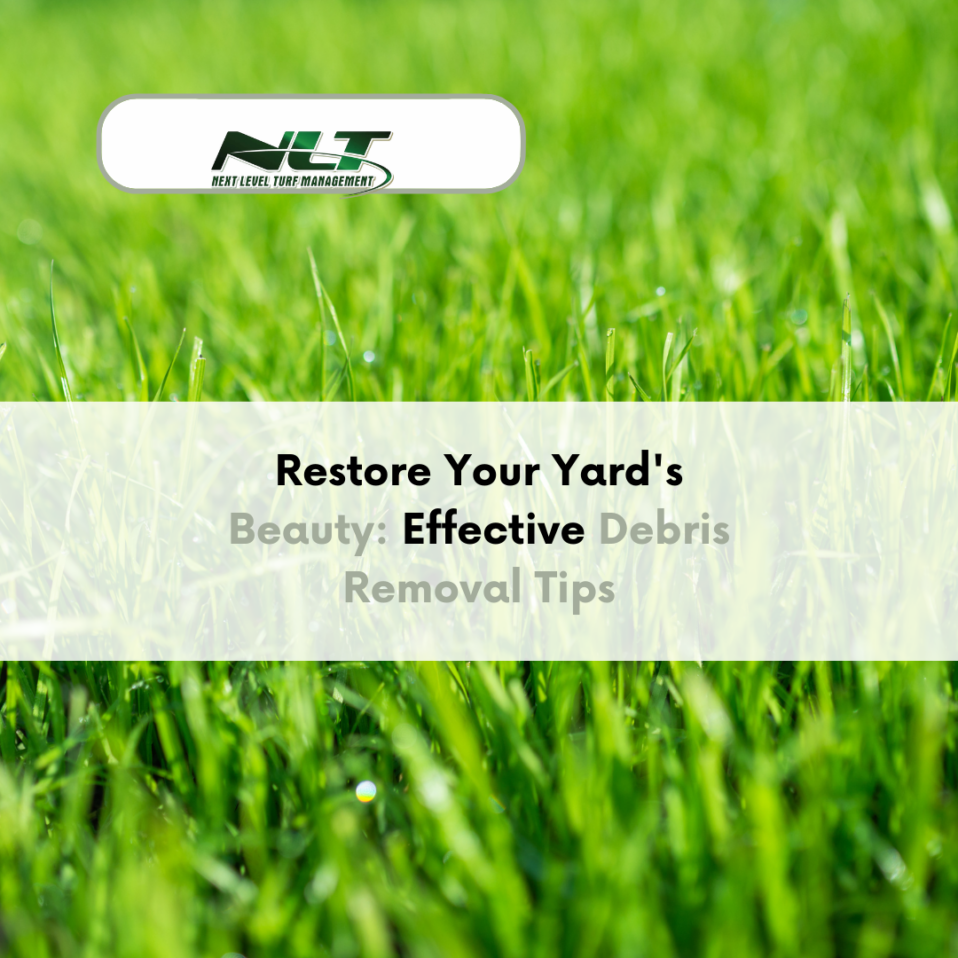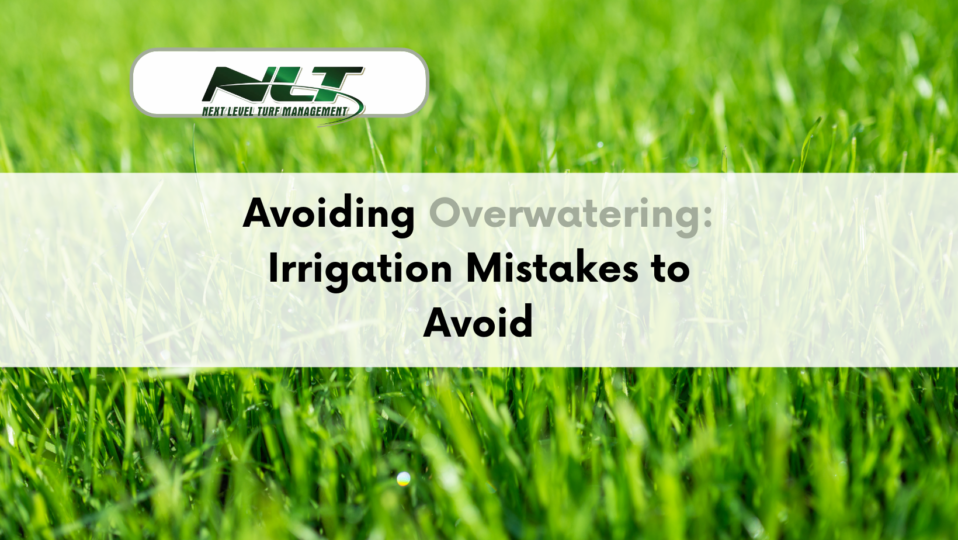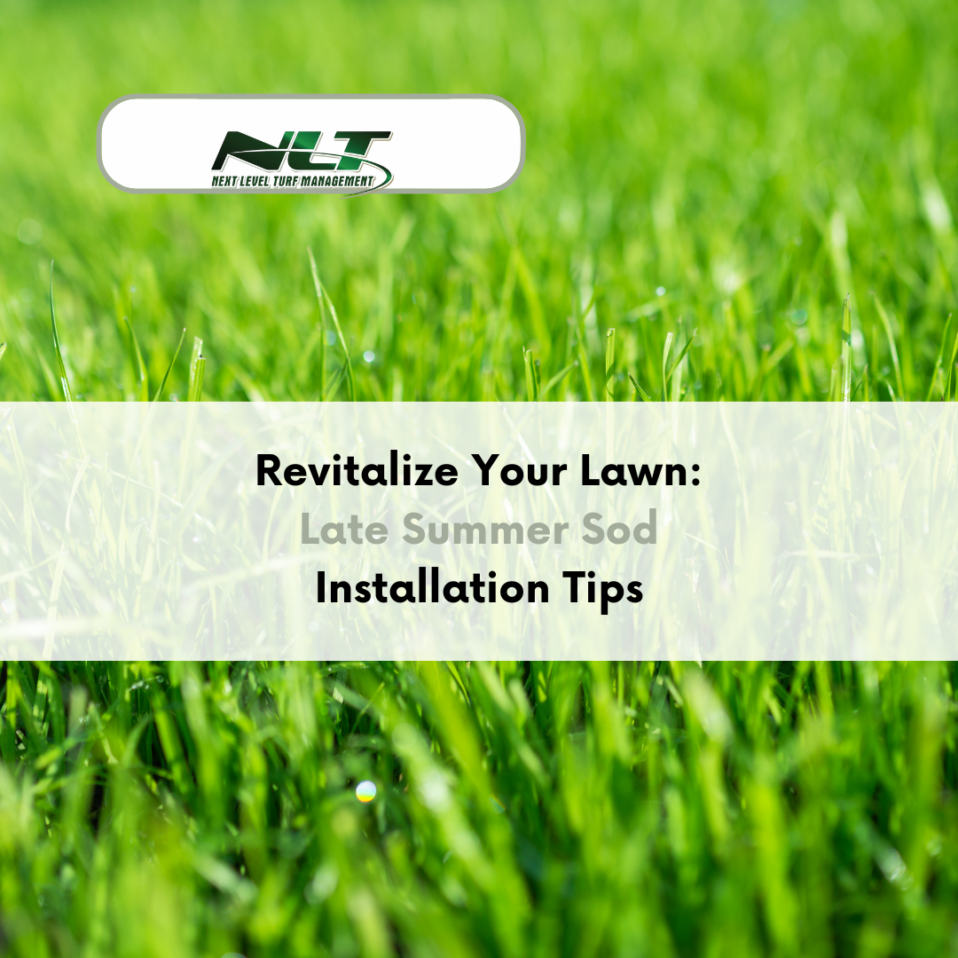Summer is a wonderful time to enjoy your lawn, but it’s also when debris can accumulate, making your outdoor space look untidy. Leaves, branches, and other debris can hinder your lawn’s beauty and health. Properly managing this debris is crucial to maintaining a vibrant, welcoming yard. Tackling stubborn debris requires a combination of the right tools, techniques, and a bit of persistence.
Central Florida, with its unique climate and frequent storms, often leaves homeowners dealing with more than their fair share of lawn debris. From fallen leaves to broken branches, it’s essential to keep your lawn clear to prevent damage and ensure it looks its best throughout the season. Additionally, accumulated debris can create ideal conditions for pests and diseases, further stressing your lawn.
Our aim is to provide you with effective summer clean-up solutions that can help you manage and eliminate stubborn debris. By following expert advice from Central Florida’s premier turf management company, you can keep your lawn in top shape all summer long. We will cover essential clean-up tips, the best tools to use, and how to dispose of debris properly.
With these practical solutions, you’ll be better equipped to handle any debris the season throws your way. Let’s dive into how to tackle stubborn debris and maintain a pristine, healthy lawn throughout the summer months!
Identifying Common Summer Debris
Summer brings a lot of debris to your yard. Identifying the types of debris can help you choose the best clean-up methods.
- Fallen Leaves: Even in summer, some trees shed leaves. Fallen leaves can quickly cover your lawn, blocking sunlight and air from reaching the grass. Regularly raking or blowing leaves helps keep your lawn healthy.
- Branches and Twigs: Storms and wind can scatter branches and twigs across your yard. Larger branches need to be removed promptly to prevent damage to your grass and garden. Smaller twigs can also cause problems, so it’s best to collect them regularly.
- Weeds: Weeds grow fast in warm weather. They compete with your grass for sunlight, water, and nutrients. Regularly pulling weeds or using safe weed control products keeps them in check and prevents them from overtaking your lawn.
Essential Tools for Effective Debris Removal
Having the right tools makes summer clean-up faster and easier. Here are some must-have items for debris removal:.
- Rakes: A sturdy rake is essential for gathering leaves and small debris. Choose one with flexible tines to prevent damaging your grass.
- Leaf Blowers: Leaf blowers are useful for moving large amounts of leaves quickly. They come in various sizes and styles, so select one that fits your yard’s needs and your comfort level.
- Wheelbarrows: A wheelbarrow helps transport large piles of leaves, branches, and other debris to your disposal area. This tool saves time and effort, especially if you have a big yard.
- Gloves: Protect your hands from sharp twigs and rough branches by wearing good-quality gloves. They also keep your hands clean and help you grip tools better.
- Pruners: Pruners are useful for cutting back small branches and trimming shrubs. Keeping your plants trimmed reduces the amount of debris that falls to the ground.
Techniques for Efficient Debris Management
Using effective techniques makes debris management more efficient and keeps your yard looking its best.
- Regular Maintenance: Consistent clean-up habits prevent debris from overwhelming your yard. Schedule regular sessions to remove leaves, branches, and weeds. Frequent clean-ups make each session quicker and easier.
- Mulching: Mulching leaves and small twigs can turn debris into valuable organic matter for your garden. Use a mulching mower or collect leaves and twigs, then shred them into smaller pieces. Spread the mulch around your plants to retain moisture and reduce weed growth.
- Composting: Create a compost pile with organic debris like leaves, grass clippings, and small twigs. Composting turns waste into nutrient-rich soil that you can use in your garden. Make sure to balance green materials (like grass clippings) with brown materials (like dry leaves) for the best results.
- Segregation: Separate different types of debris to make disposal easier. Pile leaves and small twigs together, and place larger branches in another area. This practice also helps you decide which debris can be mulched, composted, or needs to be disposed of differently.
Proper Disposal of Yard Debris
Knowing how to properly dispose of yard debris helps keep your community clean and your home compliant with local regulations.
- Yard Waste Collection: Many communities offer yard waste collection services. Check your local rules to know when and how to prepare your debris for collection. Use the designated bags or containers and have them ready on the scheduled pick-up day.
- Green Waste Drop-off Sites: Some areas have drop-off sites where you can take your yard waste. This option is helpful if you miss the collection day or have a large amount of debris. Make sure to follow the guidelines for accepted materials and prepare your debris accordingly.
- Burning: In some rural areas, burning yard waste is allowed. Always check local regulations before burning debris. Make sure to follow all safety protocols, like having water on hand and avoiding dry, windy days. Never burn too close to buildings, trees, or other flammable objects.
- Hire Professional Services: If the amount of debris is overwhelming or you lack the tools and time for proper disposal, consider hiring a professional service. Experts can handle large-scale clean-ups efficiently and ensure your yard is free of clutter.
Creating a Debris Management Plan
A plan helps you manage yard debris efficiently throughout the summer.
- Assess Your Yard: Look around your yard to identify the main sources of debris. Pay attention to the kinds of trees, plants, and areas where debris tends to accumulate.
- Set a Schedule: Establish a regular clean-up schedule that fits your yard’s needs and your availability. Weekly or bi-weekly sessions work well for most yards.
- Use the Right Tools: Make sure you have the necessary tools to manage debris effectively. Keep your tools in good condition and store them in a safe, accessible location.
- Consider Seasonal Changes: Different seasons bring different types of debris. Adjust your plan as needed to address the specific challenges each season brings.
With the right knowledge, tools, and techniques, tackling stubborn debris during summer clean-ups becomes a manageable task. Regular maintenance and proper disposal keep your yard looking its best and enhance your outdoor enjoyment. Stay tuned for more detailed strategies to keep your lawn pristine and healthy throughout the summer.
Dealing with Grass Clippings
Grass clippings can quickly become a source of debris if not managed properly. Here’s how to effectively handle them:
- Leave Them on the Lawn: If you mow regularly, grass clippings can stay on the lawn as natural fertilizer. Mulching mowers chop clippings into small pieces, allowing them to decompose quickly and release nutrients back into the soil.
- Bagging Clippings: If your lawn has grown too tall between mowings, the clippings might be too long to leave behind. In this case, use a mower with a bag attachment to collect and dispose of the clippings. This prevents them from smothering the grass below.
- Composting Clippings: Grass clippings make an excellent addition to your compost pile. Mix them with other yard waste, like leaves and twigs, to create rich compost. Keep the balance right between green and brown materials to ensure proper composting.
- Using Clippings as Mulch: Grass clippings can also be used as mulch around plants and garden beds. Spread a thin layer to help retain soil moisture and suppress weeds. Avoid piling too thick, as this can lead to matting and prevent water from reaching the soil.
Managing Fallen Leaves
While most fallen leaves occur in autumn, some trees shed during the summer too. Here’s how to keep them from becoming problematic:
- Regular Raking: Rake leaves regularly to prevent them from covering your grass too thickly. If left unattended, they can block sunlight and airflow to the grass, causing it to weaken.
- Leaf Blowing: For larger areas, use a leaf blower to gather leaves into piles. This method can be faster and easier than raking, especially for yards with many trees.
- Mulching Leaves: Much like grass clippings, leaves can be mulched. Use a mulching mower to chop them into small pieces, which can then be left on the lawn as a nutrient boost or collected for composting.
- Creating Leaf Mold: Leaf mold is an excellent soil conditioner. Collect leaves and store them in a pile or a bin. Let them sit for a year or so, turning occasionally. The leaves will decompose into a rich, dark material that can be used to enhance soil quality.
Addressing Pest Debris
Certain pests can leave behind debris, such as droppings or chewed plant material. Properly managing this type of debris keeps your yard clean and healthy.
- Frequent Inspections: Regularly inspect your yard for signs of pests. Look for damaged leaves, chewed stems, or excrement. Identifying pest problems early allows you to take action before extensive damage occurs.
- Clean-Up Droppings: Use gloves and a scoop to collect any noticeable droppings. Properly dispose of them to minimize health risks and prevent them from attracting more pests.
- Prune Damaged Plants: Remove parts of plants that have been chewed or otherwise harmed by pests. This reduces hiding spots and food sources for pests, making your yard less attractive to them.
- Apply Safe Pest Control: Consider using non-toxic pest control methods to keep critters at bay. Natural predators, traps, and environmentally friendly products can help manage pests without harming the environment.
Handling Storm Debris
Summer storms can leave a mess of branches, leaves, and other debris. Here’s how to efficiently clean up after a storm:
- Assess the Damage: After a storm, safely inspect your yard for debris. Look for broken branches, scattered leaves, and other materials that need to be removed.
- Gather Large Debris: Collect large branches and twigs first. Use pruners or a saw for any branches that need further cutting. Pile them neatly for easier removal or disposal.
- Clear Smaller Debris: Rake or blow smaller debris like leaves and twigs into piles. Collect these piles in bags or wheelbarrows for disposal. Keeping the lawn clear of small debris prevents smothered grass and improves its appearance.
- Check for Safety Hazards: Ensure that no dangerous objects, such as broken glass or sharp metal, are left in the yard. Safely dispose of these items to prevent injury.
Maintaining a Debris-Free Yard
Preventive measures can help keep your yard free of stubborn debris throughout the summer.
- Trim Trees and Shrubs: Regularly trim branches to prevent them from breaking off during storms. Well-kept trees and shrubs are less likely to drop excessive leaves and twigs.
- Keep Gutters Clean: Clear your gutters to prevent overflow and ensure proper drainage. Clogged gutters can lead to water spilling over and washing debris into your yard.
- Mulch Around Plants: Use mulch around your plants and garden beds. This helps retain moisture, suppresses weeds, and reduces the amount of debris accumulating at the base of plants.
- Store Tools Properly: After each clean-up session, store your tools properly. This keeps them in good condition and ready for the next clean-up, making the task easier.
- Engage Neighbors: Work with your neighbors to manage shared debris. Coordinating clean-up efforts can make the process more efficient and help maintain a clean, debris-free neighborhood.
With the right approach, tools, and techniques, managing stubborn debris from grass clippings, fallen leaves, pest leftovers, and storm materials can be a straightforward task.
Preventing Debris Build-Up
Preventing debris from accumulating in the first place is an effective way to maintain a clean yard.
- Regular Mowing: Mowing your lawn regularly helps prevent the build-up of long grass clippings. Shorter clippings decompose more quickly, reducing the amount of debris.
- Scheduled Pruning: Set a schedule for pruning trees and shrubs. Regular pruning reduces the number of fallen branches and twigs, keeping your yard cleaner.
- Using Mulch: Applying mulch around your plants helps prevent weed growth and reduces the amount of yard debris. Mulch also retains moisture and enriches the soil.
- Seasonal Cleanup: Plan seasonal cleanups to address the specific debris challenges of each season. For example, raking leaves in the fall and clearing twigs after winter helps keep your yard tidy year-round.
Safe Handling of Yard Waste
Safety is crucial when dealing with yard waste. Proper handling minimizes the risk of injury and ensures a smooth clean-up process.
- Wear Protective Gear: Always wear gloves to protect your hands from sharp branches and rough materials. Consider wearing safety glasses to shield your eyes from debris.
- Proper Lifting Techniques: When lifting heavy branches or bags of leaves, use proper lifting techniques to avoid back injuries. Bend your knees and keep your back straight while lifting.
- Stay Hydrated: Working in the summer heat can lead to dehydration. Drink plenty of water and take breaks in the shade to stay cool and hydrated.
- Use the Right Tools: Using the right tools for the job reduces the risk of injury. Ensure your tools are in good condition and use them as intended to prevent accidents.
Creating a Compost System
Setting up a compost system is a great way to manage yard debris while creating valuable soil amendment for your garden.
- Choosing a Spot: Select a spot in your yard for the compost pile. Choose a location with good drainage and easy access but away from areas where the smell might be an issue.
- Building the Pile: Start by layering brown materials like dry leaves and twigs, followed by green materials like grass clippings and kitchen scraps. Alternate layers to ensure proper decomposition.
- Turning the Compost: Turn the compost pile regularly to aerate it and speed up the decomposition process. Use a pitchfork or shovel to mix the materials.
- Using the Compost: Once the compost has turned into dark, crumbly soil, it’s ready to use. Spread it in your garden beds or around plants to enrich the soil with nutrients.
Efficient Yard Debris Collection
Collecting yard debris efficiently saves time and effort, allowing you to maintain a clean yard with ease.
- Use Tarps: Spread a tarp on the ground to collect leaves and small twigs as you rake. When you’re done, simply fold the tarp and carry it to your disposal area.
- Bagging Leaves: Use large, sturdy yard waste bags to collect leaves and small debris. This method makes it easier to transport and dispose of the debris.
- Branch Bundles: Tie larger branches into bundles for easier handling. Use sturdy rope or twine to keep the bundles secure. This makes it easier to move branches to your disposal area or curb.
- Wheelbarrows and Carts: A wheelbarrow or garden cart is useful for transporting large amounts of debris. Load the debris and wheel it to your compost pile or disposal area.
Engaging Community Resources
Taking advantage of community resources can make yard debris management more efficient and environmentally friendly.
- Yard Waste Pick-Up: Many communities offer yard waste pick-up services. Check your local schedules and guidelines to make sure you prepare your debris correctly for collection.
- Recycling Centers: Some areas have recycling centers where you can drop off yard waste. These centers often turn the waste into mulch or compost, contributing to environmental sustainability.
- Community Clean-Up Events: Participate in community clean-up events. These events bring neighbors together to clean up shared spaces and can be a great way to manage debris.
DIY Yard Debris Projects
Turning yard debris into DIY projects can be a fun and creative way to manage waste while enhancing your garden or home.
- Natural Fencing: Use larger branches and twigs to create natural fencing for your garden beds. Stack them neatly to form a rustic border that’s both functional and attractive.
- Garden Pathways: Lay down thicker branches or logs to create pathways through your garden. This recycles the debris and adds a unique look to your yard.
- Artful Mulch: Get creative with mulching by designing patterns with different colors and textures of leaves and twigs. This adds visual interest to your garden beds while controlling weeds.
- Compost Bins: Build your own compost bins using recycled branches and wood. This project helps manage yard waste and provides a dedicated space for composting.
Encouraging Wildlife Habitats
Some yard debris can be used to create habitats for wildlife, promoting a healthy and diverse ecosystem in your yard.
- Brush Piles: Pile twigs, leaves, and branches in a corner of your yard to create a habitat for small animals like birds, rabbits, and insects. These piles offer shelter and nesting spots.
- Log Shelters: Place larger logs in shaded areas to provide shelter for reptiles and amphibians. These animals help control pests and contribute to a balanced ecosystem.
- Bird Feeders: Use fallen branches to create bird feeders. Attach containers or build simple platforms to offer seeds and food for local birds.
- Insect Hotels: Build insect hotels using hollow stems, bark, and other natural materials. Insects like bees and ladybugs are beneficial for your garden, helping with pollination and pest control.
Creating a clean and healthy yard extends beyond aesthetics. Efficiently managing debris through regular maintenance, safe disposal, and creative repurposing can enhance your outdoor environment. Stay tuned for more detailed strategies to keep your lawn pristine and healthy throughout the summer.
Achieve a Pristine Yard with Expert Clean Up Services
Maintaining a clean and healthy yard during the summer can be challenging, but with the right approach, tools, and techniques, you can effectively manage stubborn debris.
For those overwhelmed by the scale of clean-up tasks or lacking the necessary tools and time, professional services can offer the support you need. At Next Level Turf, our team of experts is dedicated to providing comprehensive clean-up services that ensure your yard remains pristine and enjoyable throughout the summer
Don’t let yard debris overwhelm you. Contact our team today to learn more about our lawn clean-up services in Westerville, OH, and how we can help you maintain a beautiful, debris-free yard. With our expertise, your lawn will stay vibrant and healthy, ready for all your summer activities.







Post a comment